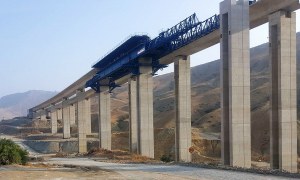🕑 Reading time: 1 minute
INSPECTION OF A BRIDGE STRUCTURE:
Once a bridge is opened for use, management begins and carries on for the life of the bridge. Hence, the bridge must be regularly inspected and maintained for the benefit of its users.
There are three levels of inspection:
1. General inspection:
- Usual inspection of representative parts of a structure.
- Carried out nor more than two years after last general or principal inspection.
2. Principal inspection:
- It involves close examination of all inspectable parts of the bridge structure and adjacent earthworks.
- The interval between principal inspections would normally exceed six years.
3. Special inspection:
This inspection occurs for special cases such as:
- To investigate specific problems either found during inspection or already discovered on similar structures.
- Structures with weight restrictions.
- After a major incident.
A standard format for inspection reports must be maintained and should include recommendations for remedial measures. The information collected in a bridge inspection reports is sent to the highways agency. Here the data is fed into the agency’s database such that it can gain an overall picture of the state of the bridge and calculate an estimate of likely future expenditure.
Not all the components of a bridge is deteriorate at the same rate. For instance, the concrete sub and superstructure should not need replacing during 120 year design life. A little minor maintenance should suffice.

The items that will need maintenance and or replacement include:
- Bearings
- Waterproofing membranes
- Road surfacing
- Movement joints
- Parapets

The road surfacing will have to be replaced over long stretches of the carriageway. It is considered best to tie in maintenance, replacement and repair with the road re-surfacing in order to minimize the costs and disruption to road users.


